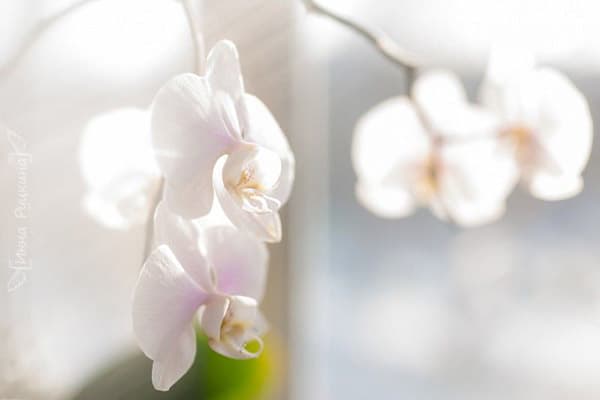Can an orchid be kept in the sun?
Photosynthesis is a necessary process for the normal development, growth and flowering of a plant. Is it possible to keep an orchid in the sun? It is possible and necessary. But sunlight should not be direct, but diffused. In nature, it lives as an epiphyte on trees at a height of up to 2 meters. And although in the tropics the sun shines longer and brighter, the crowns create a lacy shadow, protecting the flower from burns.

What kind of lighting does an orchid need?
Light is the main source of energy for orchids. Leaves, flower stalks and even roots absorb it and process it into glucose and other useful compounds. Scientifically, this process is called photosynthesis.
A flower requires between 1,000 and 4,500 foot-candles of light to photosynthesize. The foot-candle is a unit of measurement. Illumination is also measured in lux. 1000 lux equals 92.3 foot-candles. Yes, yes, science approaches growing plants responsibly. Agree, it would be wrong to focus on the subjective “lot of sun” and “little”. Everything needs to be measured accurately.
To make it easier to understand how much light the tropical beauty needs, let’s try to compare its brightness and footcandles. At midday on a windless day under the sun, the irradiance is 10,000 footcandles. Opposite an uncurtained south window - 6000, a curtained one - 4000. And at a distance of 30 cm - 3000 foot-candles. This is provided that the window is not blocked by buildings and trees. In total, we get that the flower will do well on a window on the south side of the house, slightly shaded.
But there is actually one small catch.Orchids come in several types and, accordingly, require different levels of illumination:
- Vandas, dendrobiums, oncidiums – light-loving. For them, the optimal light level is 35,000 lux, or 3,000-4,500 foot-candles.
- Phalaenopsis, gemaria, slippers require little light. For normal development, they will need light of 10,000 lux, or 1,000 foot-candles.
Where is the best place to put a flower?
The choice of location for a flower is of great importance. Many people know that it is better to grow flowers on a windowsill, because in the immediate vicinity of the window there is the most sunlight. But, as we have already found out, different types of orchids need different levels of illumination. The light can be adjusted by placing flowers on different windows.
- A light-loving orchid should be placed on the windowsill of a south window.
- An orchid that needs little sun should be placed on the windowsill of an east window, or at a distance of 60 cm from a south window, or opposite a west window at a distance of 30 cm.
You can also reduce the light level by sticking a lace film on the window or placing the flower in the shade of a tall, light-loving plant.
It is not recommended to place plants on the north side of the house. There is too little sun for them and short daylight hours.
Signs of lack and excess of light
The indoor orchid is popular among gardeners. First of all, it is seduced by its long flowering, which can last up to six months.
In order for an orchid to develop and bloom, it must have enough sunlight. Signs of its deficiency:
- matte leaves of dark green color with a blue tint;
- reduction in the size of young leaves;
- lack of flower arrow.
In such a situation, it is recommended to move the pot to a more illuminated place or illuminate the plant with a phytolamp. Illumination is especially important in winter, when the sun's rays are dim and appear briefly.
The optimal length of daylight for orchids is 14–16 hours. If there is too much sun, burns and pigmentation form on the leaves of the plant. They become lighter, and discolored spots with a brown edge appear.
An excess of sun will help neutralize one simple trick. In hot weather, you need to water the flower more often and open the window. Air movement and humidity will help reduce the temperature of the substrate and the plant itself.
So, you can keep the orchid in the sun. She loves good lighting. But it may suffer from direct sunlight. The required amount of light depends on the type of flower. Vandas, oncidiums and dendrobiums should be placed in a location with the highest level of light, but phalaenopsis needs less bright sun. Choosing the right place for the plant guarantees rapid growth and long flowering.

